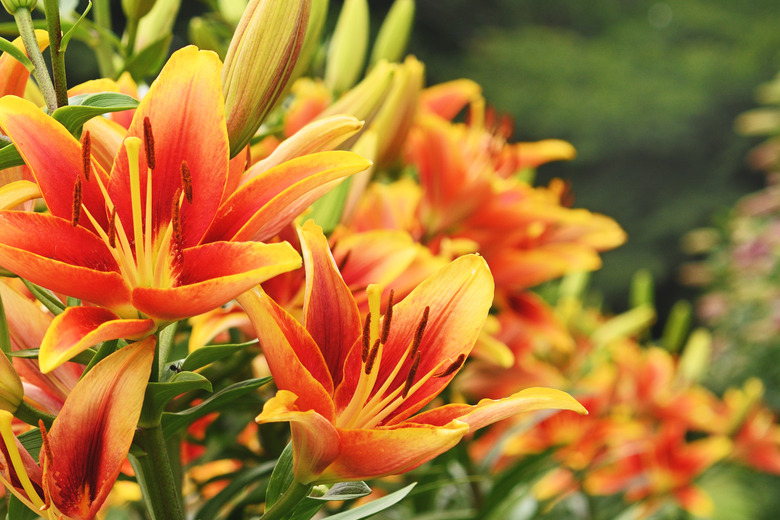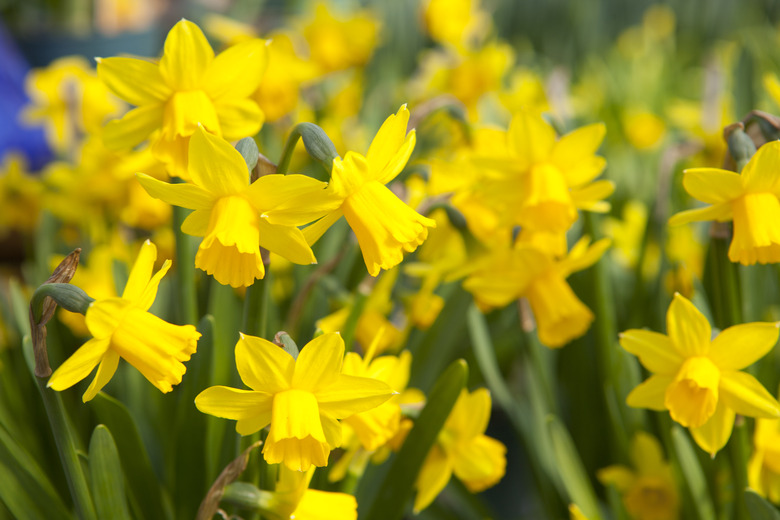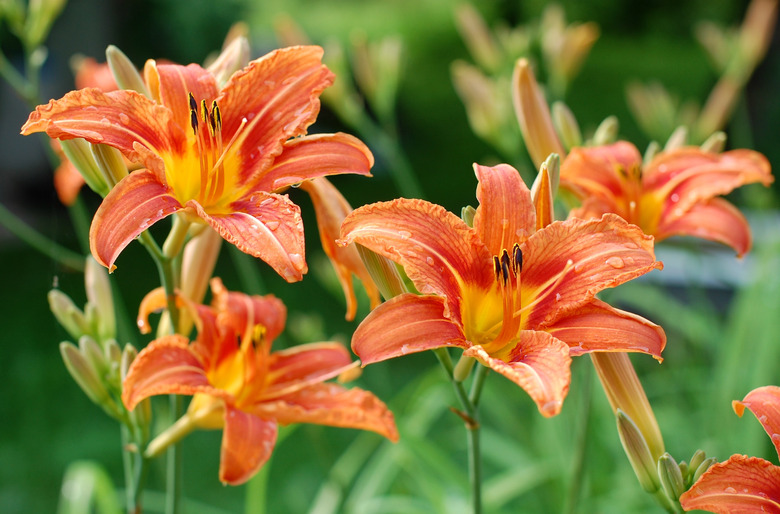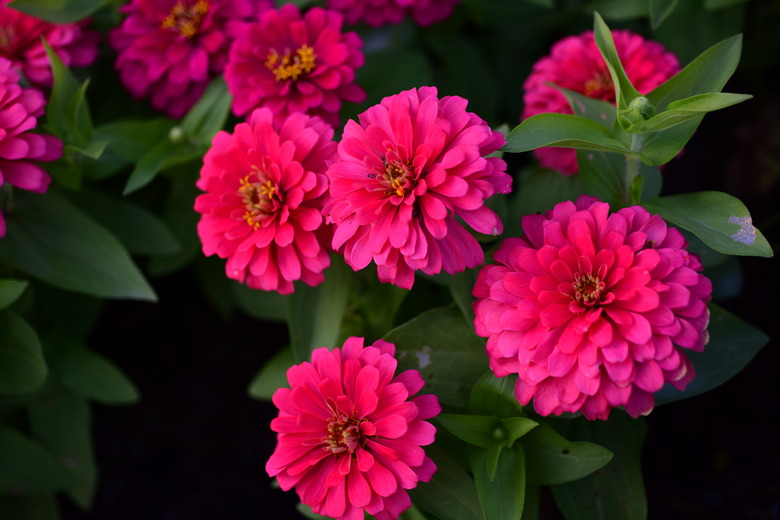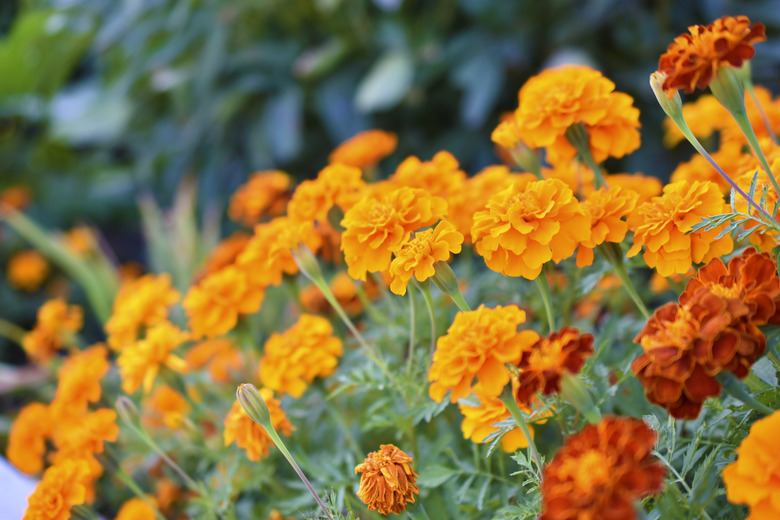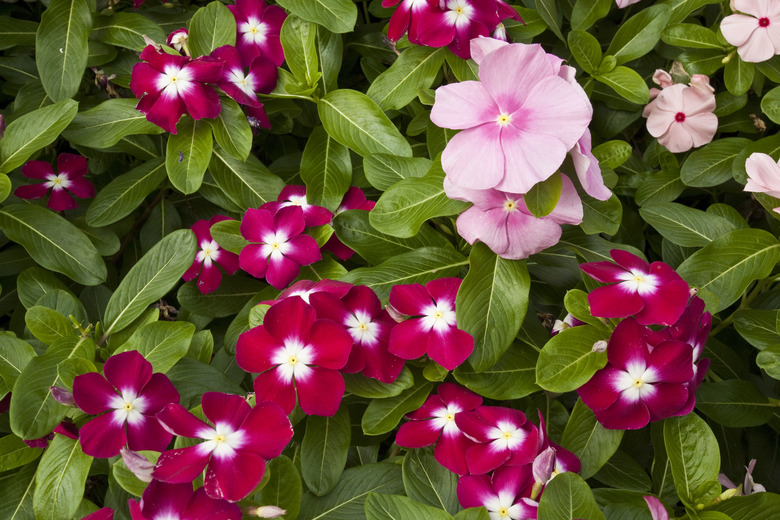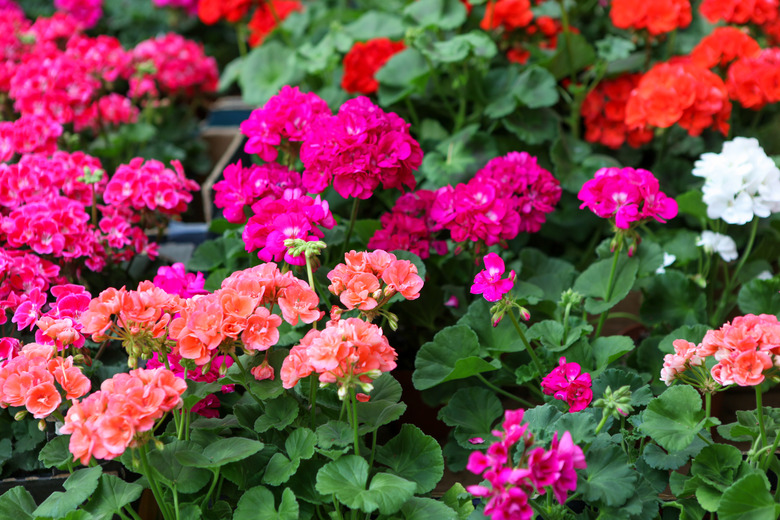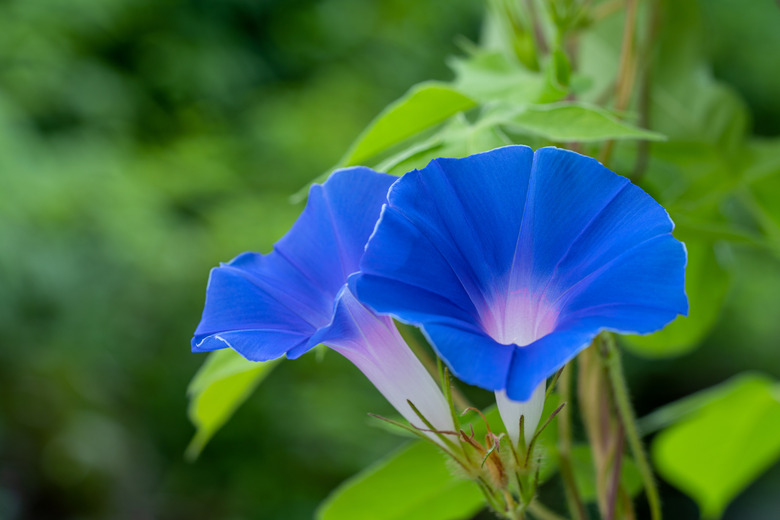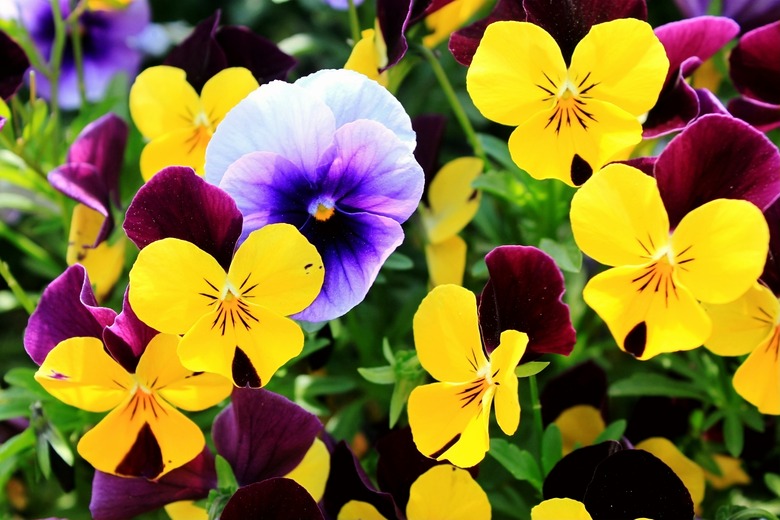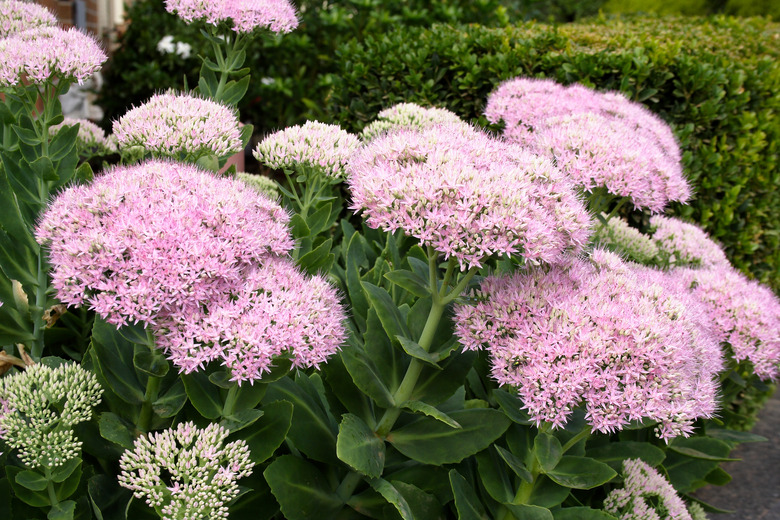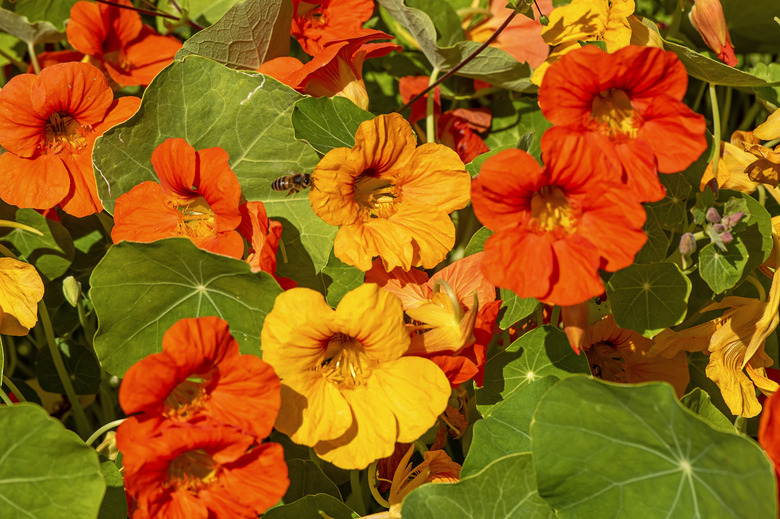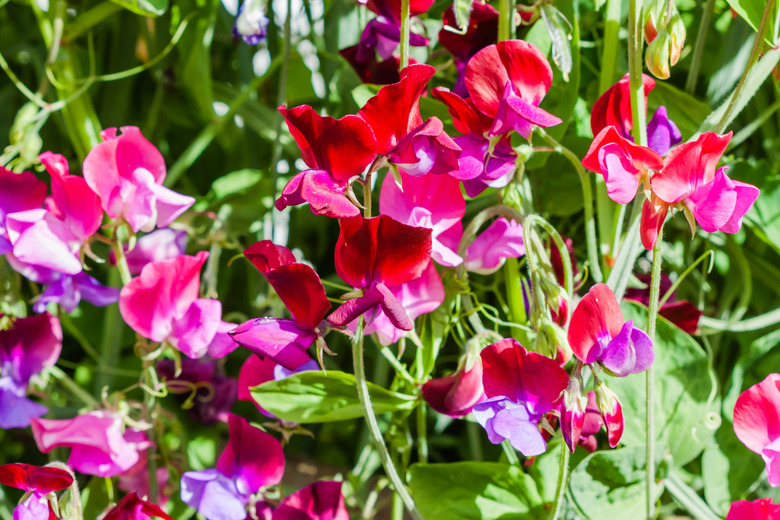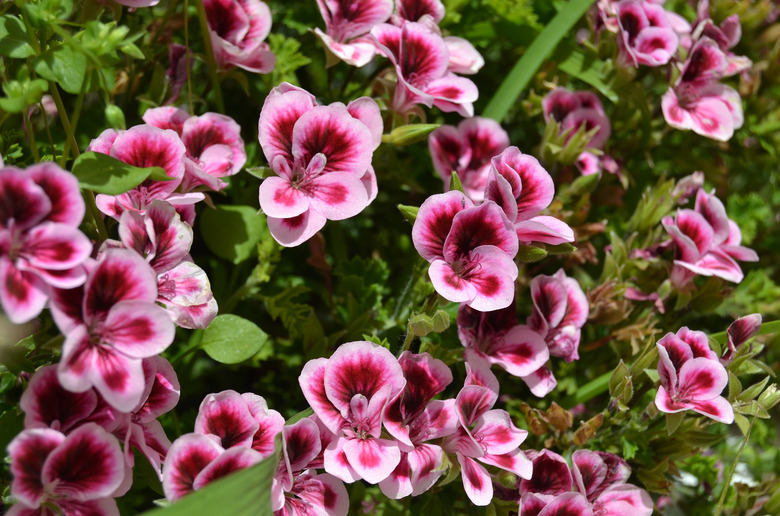The 12 All-Around Easiest Flowers To Grow
We may receive a commission on purchases made from links.
Choosing some of the easiest flowers to grow provides an amazing confidence boost to beginner gardeners still learning the tricks of the trade. Even if you make a few mistakes, these low-maintenance, forgiving flowers usually adapt easily and continue to look happy and healthy. Some actually prefer to be left alone. Best of all, these easy-to-grow flowers represent all the colors of the rainbow, so you're sure to find a flower that sparks joy.
1. Daffodils
1. Daffodils
Once you drop daffodils (Narcissus spp.) into the soil, they'll reward you with cheerful yellow blooms on stems about 8 inches high first thing in the spring. They grow best in zones 4 through 8. Fertilizing and watering these low-maintenance flowers are optional, but they do appreciate consistent moisture when growing. Choose a sunny and well-draining area to grow daffodils. When the leaves start to turn yellow, you can cut them at ground level.
2. Daylilies
2. Daylilies
If you're looking for a flowering plant that will thrive while being completely ignored, a daylily (Hemerocallis spp.) is the perfect choice. This tough plant flowers in virtually any type of soil in USDA zones 3 through 9. All it needs is a sunny location, and it will grow and flower consistently. It's typically unbothered by pests or disease, but deer do enjoy eating these flowers. A variety of flower colors is available when growing daylilies, and blooms may be single or double, although each blossom lasts only for a day as its name hints.
3. Zinnias
3. Zinnias
Zinnias (Zinnia spp.) produce globe-shaped, multicolor flowers that attract numerous pollinators, including butterflies, and they make excellent additions to cut-flower arrangements. As an annual flower, zinnias must be planted every year. They grow best when sown directly outdoors instead of being transplanted. Zinnias grow rapidly, with sprouts appearing within a week. Fertilizing zinnias isn't strictly necessary, but they should be watered during dry spells.
4. Marigolds
4. Marigolds
A dense planting of marigolds (Tagetes spp.) creates a cheerful ground cover with a practical twist: These flowers are reported to ward off certain pests in the vegetable garden and are often planted as a border around tomatoes in particular. Even if you choose to grow marigolds on their own, you'll be rewarded with long-lasting, heat-loving flowers. Place marigolds in full sun for best results and select a species or cultivar that works well for your soil. Some are more drought tolerant than others, for example, and some are easier to start from seed. Most marigolds are annuals, although you may find some perennial selections that come back year after year.
5. Impatiens
5. Impatiens
Impatiens (Impatiens spp.) are annual flowers that form a gorgeous carpet of color when planted in close proximity. In fact, a dense planting will produce taller growth in impatiens. They come in a variety of colors, and many produce bicolor blooms. Although impatiens are some of the easiest flowers to grow thanks to their fast growth habit and burst of color, they do require consistent moisture. You'll know you've gone too long between waterings if the leaves begin to look dry. Impatiens grow fine in part shade, and they may overwinter in zones 10 and 11. In all other zones, transplant young impatiens directly into the garden rather than sowing seeds. If you're growing a species that reseeds itself, you'll be rewarded with flowers year after year without having to rely on transplants for blooms in successive years.
6. Geraniums
6. Geraniums
You don't have to plant a rose bush to enjoy sophisticated deep-red flowers in your garden. Try garden geraniums (Pelargonium spp.) for a beginner-friendly experience instead. These vibrant plants often have attractive bicolor leaves as well. Cultivars can grow as small as 4 inches tall and 6 inches wide or as large as 4 feet tall and 3 feet wide. Geraniums can be grown as perennials in zones 10 and 11, but they are planted as annuals elsewhere. Geraniums prefer to have the soil dry out slightly between waterings and do best in full or partial sun. Deadhead old blooms to encourage new flowers throughout the season.
7. Morning Glories
7. Morning Glories
Morning glories (Ipomoea spp.) are vigorous, vining plants that only open their white, purple or blue flowers early in the morning. Morning glories are almost too easy to grow; they self-seed easily and may spread throughout the garden if left unchecked. This low-maintenance plant just needs occasional watering during dry spells. It doesn't need fertilizer, and in fact, it may not produce many blooms if it is fertilized too much. Sow morning glory seeds in a location that gets full sun for best results. Morning glories grow as annuals in USDA zones 2 through 11.
8. Pansies
8. Pansies
Pansies (Viola x wittrockiana) are easy flowers to grow as long as you follow a couple of guidelines. First, purchase young pansies from your local garden center rather than starting them from seed. Second, incorporate pansies into your spring or fall garden but skip planting them during summer. Other than that, pansies require no special treatment to keep them flowering for a long time. Give them water, sun and average-quality soil, and they'll reward you with cheerful blooms. Pansies are biennials in USDA zones 6 through 10, surviving winter if planted in fall to bloom again in spring. Elsewhere, enjoy them as annuals. The only major pests for which to watch are slugs.
9. Sedum or Hylotelephium
9. Sedum or Hylotelephium
Sedum refers to numerous species and cultivars in the Sedum genus, some of which are now classified in the Hylotelephium genus instead. The flowers on Hylotelephium spectabile in particular are large and showy, displaying a beautiful pink or peach color on top of succulent leaves. This plant prefers a sunny location in average-quality soil, and it won't keel over during a dry spell. It also grows in clay, rocky and sandy soils. As a perennial, sedum is as close to a "plant it and forget it" flower as you can get. Sedum grows best in zones 4 to 9.
10. Nasturtium
10. Nasturtium
Nasturtiums (Tropaeolum majus) are colorful and versatile warm-weather plants. They can be grown as perennials in zones 9 to 11 but must be replanted in early summer in cooler zones. As annuals, they'll grow in zones 2 through 11. Fortunately, nasturtiums germinate easily and quickly even in poor soil, and they require no fertilizer. Their trailing growth habit makes them perfect as a ground cover or as a climbing vine. Nasturtiums are often included in vegetable gardens because they're completely edible. However, some gardeners prefer to plant nasturtiums in a separate area of the yard due to their tendency to attract tons of aphids.
11. Sweet Peas
11. Sweet Peas
Despite a confusing name, sweet peas (Lathyrus odoratus) are grown in zones 2 through 10 for their fragrant flowers, not for their inedible pods. The white, purple, pink, red, yellow and blue flowers blossom on a vigorous vine in early spring. To keep them as happy as can be well into late summer, plant sweet peas in a location that receives afternoon shade. Mulch the roots well. Although sweet peas don't require much attention, they do need a touch of patience since they're slow to germinate.
12. Begonias
12. Begonias
Do you want to add color to a shade garden? Plant a begonia! Begonias (Begonia spp.) produce luxuriant flowers in sophisticated oranges, pinks and reds on top of dark foliage. They prefer partial shade and tolerate dry soil better than they tolerate wet soil. Most begonias are annuals in the garden, but some are perennials, such as hardy begonia (Begonia grandis) in zones 6-9. Other species can be grown outdoors year-round in zones 10 and 11. In zones outside their perennial range, consider growing begonias in containers so they can be brought indoors during the winter. They do well indoors thanks to their compact size and preference for part shade.
